INDIAN OCEAN TRAVEL by TOURISMER
INDIAN OCEAN TRAVEL by TOURISMER

Responsible travel Kenya
Tourists from all over the world know that they can come to Kenya to find the most beautiful wild landscapes and the most majestic animals. Seaside tourism is a real delight with heavenly beaches.
Kenya is the destination that will allow you to combine as easily a thrilling safari, to meet the big cats of Africa, with a seaside stay on the shores of the Indian Ocean in an exotic setting and turquoise blue waters that give glimpses of multicolored corals.
Kenya is one of the most beautiful diving spots in the Indian Ocean, a warm crystal sea and magnificent seabed.
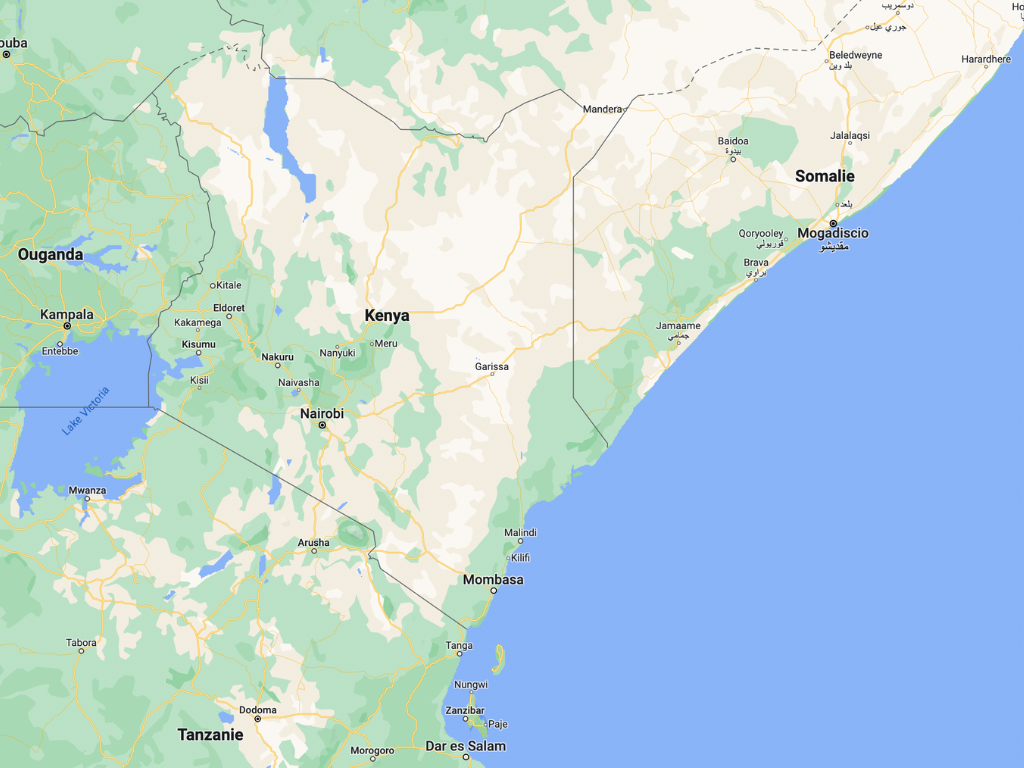

Kenya is one of the most welcoming African lands, but also the most visited in the world. Kenya is home to 56 parks and nature reserves. This is the guarantee of sustainable tourism that immerses travelers in the heart of unspoiled and wild nature.
Kenya is also an opportunity to meet an ethnic mosaic of populations who inhabit this vast territory that has remained wild. The traces of several civilizations, such as the Maasai, the Bagga and the Bantu, attest to the ancestral cultural richness of Kenya.
We are supporting
The Great Rift Valley often referred to as the "Cradle of Humankind." Findings indicate that hominids like Homo habilis and Homo ergaster lived in Kenya 2.5 million years ago.
Peoples from the north arrived in the region around 2000 BC. J.-C., creating cultures such as the Elmentetian at the time of the Neolithic pastoral. At the end of the Ist millennium, Bantu peoples arrived from the west. Finally, from 1500 AD. J. - C. arrived the people of Nilotic languages coming from the North-West.
The colonial history of Kenya began in the VIIIe siècle avec l’établissement de colonies arabes le long des côtes.
Au début du XVIe century arrive, in the wake of Vasco de Gama, the Portuguese whose domination will be eclipsed by that of the sultans of Oman in 1698. However, these colonizations remain confined to the coast of Zanguebar, the goal being the control of the maritime route of the Indies.
The new protectorate is called British East Africa. In 1902, white settlers were allowed access to the fertile high plains. These settlers had influence in the government even before it was officially declared a Crown colony in 1920, but Africans were excluded from direct political participation until 1944.
On the model of South Africa, the British colonial administration imposed in 1915 the obligation for all blacks over the age of fifteen to permanently wear around their neck a certificate proving their identity and their employment.
From October 1952 to December 1959, the Mau Mau revolt fought British colonial law. British decision-makers then brought more and more Africans into government processes, in order to cut off the rebels from their support.
The first direct elections for Africans to the Legislative Council took place in 1957. The war ended with 100,000 dead on the African side and 320,000 detained in camps, more than a thousand of whom were executed and thousands more tortured.
The British released Jomo Kenyatta and a few other political prisoners in 1961 to allow Kenya's imminent independence to form a "moderate" government favorable to their interests.
Although the British wanted to hand over power to a moderate group, it was the Kenya African National Union (KANU), a member of the Kikuyus tribe, the first government soon after the country's independence on December 12, 1963.
First a constitutional monarchy, Kenya became a republic a year later, Kenyatta became the first President of the Republic.
As early as December 1963, the United Kingdom had Kenya sign military agreements recognizing their right to use Kenya as a military base for possible operations in the region.
On August 4, 2010, a referendum validated the reform text of the Constitution, including a Charter of Rights and Freedoms This constitution was promulgated by President Mwai Kibaki on August 27, 2010.
The official languages are Swahili and English. The national language is Swahili to which are added 51 dialects.
According to the 2019 census, out of a population of 47.6 million, Kenya has 85.5% Christians (33.5% Protestant, 20.6% Catholic and 20.4% Evangelical) t 11% Muslim and 1.8% animism (traditional African religions).
Literature and theater
"The land was not bequeathed to us by our parents, but lent to us by our children", Kenyan proverb.
Novels, short stories, stories, and plays are plentiful, but hard to find outside of Nairobi if they haven't caught the attention of major publishers.
A famous writer speaking in the Kikuyu language: Ngũgĩ wa
Music
As everywhere in Africa, traditional music punctuates the events of life. Each ethnic group has a particular style, although one of the common points is the use of percussion. The drum, or ngoma ("drum" in Swahili), gave his name to this music.
Several ethnic groups are distinguished by their musical arrangements: the Luo northeast of Lake Victoria, the Mijikenda on the coast.

Source: https://virtualexpodubai.com/listen-watch/events/kenya-ngoma-za-kenya
Painting
In recent years, Kenya has become a hub for contemporary art in East Africa. Nairobi is becoming an important location for art in the region, with a growing list of contemporary art spaces.

Thee handicrafts
Kenya has a very rich craftsmanship, from the different tribes of the country: Masai, Turkana, Samburu, Kikuyus. Without forgetting the original objects of Arab craftsmanship.

These include: soapstone statuettes and masks, sisal baskets, Maasai jewelry and colorful loincloths.


Largely inspired by Arab and Indian influences, Kenyan cuisine is among the best local cuisines in Africa. The country has proposed its candidacy to register its gastronomy as an intangible heritage of Unesco.
Some emblematic dishes:
Nyama Choma
The national dish made up of grilled meat: at the base of goat, but it can be tasted in beef or chicken version.

TheUgali
It is a starch, it is served as is, in principle accompanied by vegetables such as kale, possibly cooked with meat or fish.

Irio Kikuyu
The Kikuyu are Kenya's largest tribe. They are Bantu, which implies that they traditionally depended on agriculture. They are at the origin of this dish:
It is a mixture of potatoes, corn and peas.


Renowned for its postcard landscapes, it is the exceptional territory for a safari, on the land of East African elephants.
A superb natural setting, with the impressive summit of Kilimanjaro in the background, and sometimes elephants crossing the savannah in the foreground!
The landscapes of the park are marked by very different areas: arid and dusty backdrops sweep through the savannah and, on the other hand, wetlands offer verdant vegetation.
Five types of habitat stand out: plains, acacias, marshes, swamps and thorn scrub. Lake Amboseli covers more than a quarter of the park, but is dry for much of the year. This is an opportunity to combine a safari with an authentic, unadorned discovery of a rich local culture with our Maasai friends.
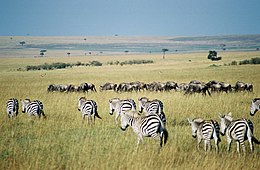
This is the must of safaris!
Its name comes from 2 elements: the Maasai tribes who live there, and the Mara river which crosses it. The Maasai Mara reserve is located in the southwest of the country, 250 km west of Nairobi. It is located on the border of Tanzania in the extension of the Serengeti National Park.

He is giant! It is half the size of Switzerland! Tsavo National Park consists of two parts divided by the railway line connecting Mombasa to Nairobi. The western part is a hilly region, while the eastern part is more desert and quite flat, except for the Yatta plateau. The Tsavo is a volcanic region that even has a few lava flows. There are large herds of elephants there. It is also possible to observe crocodiles and hippopotamuses on certain sites, particularly in the western part of the park. These two regions offer contrasting landscapes, several biotopes which favor a diversified fauna. This gigantic territory is still home to more than 10,000 elephants!
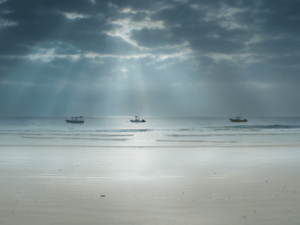 Diani Beach has been repeatedly voted one of the most beautiful beaches in Africa (but also in the world)! It is a real haven of peace on the Indian Ocean. Besides the beautiful white sand and palm trees that accompany each of our walks in the bustling city, it is the food and the many water sports offers that make the most of it.
Diani Beach has been repeatedly voted one of the most beautiful beaches in Africa (but also in the world)! It is a real haven of peace on the Indian Ocean. Besides the beautiful white sand and palm trees that accompany each of our walks in the bustling city, it is the food and the many water sports offers that make the most of it.

Samburu, Shaba and Buffalo Springs Reserves are located in the North Central part of Kenya. Less frequented, they are appreciated by travelers looking for "off the beaten track" safaris: you will discover their mountains, their extinct volcanoes, their rivers. The landscapes are very different from other parks. You can observe rare species, such as the gérenuk, the Beisa oryx or the Grévy's zebra. You may be lucky enough to see leopards there!
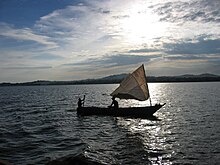

The mount Kenya, whose name means "ostrich mountain" among the Wakamba, one of the populations living at its foot, is the highest point in Kenya and the second highest peak in Africa, behind Kilimanjaro. The highest peaks culminate at 5,199 meters at Batian Point.
Mount Kenya is a red volcano born about three million years ago from the opening of the East African Rift. It was covered for millennia by an important ice cap which strongly eroded its slopes and gave it its particular relief, with many valleys descending from the summit. Today there are still a dozen small glaciers in a phase of rapid retreat, despite often negative temperatures, with a highly variable climate over millennia and centuries, seasons and days. The mountain remains an essential source of water for much of the country.
The mountain has eight levels of vegetation between the bottom and the top, including a vast crown of forest. Many species are endemic or very characteristic of Mount Kenya, such as lobelias, ragworts or Cape hyraxes.

The Nakuru Lake is one of the Great Rift Valley lakes. It is an alkaline lake or soda lake which was home to around 1 million flamingos, before its salinity changed and it became too polluted. But this reserve is also home to many other well-known species of mammals including giraffes and rhinoceros.
 It is one of the largest and best known national parks in Kenya, and the second most visited in the country after the Masaai Mara Park. From its huts (where you can stay) you can see Kilimanjaro. The park is famous for the views of the savannah with Kilimanjaro as a backdrop: this is arguably Kenya's best-known postcard.
It is one of the largest and best known national parks in Kenya, and the second most visited in the country after the Masaai Mara Park. From its huts (where you can stay) you can see Kilimanjaro. The park is famous for the views of the savannah with Kilimanjaro as a backdrop: this is arguably Kenya's best-known postcard.
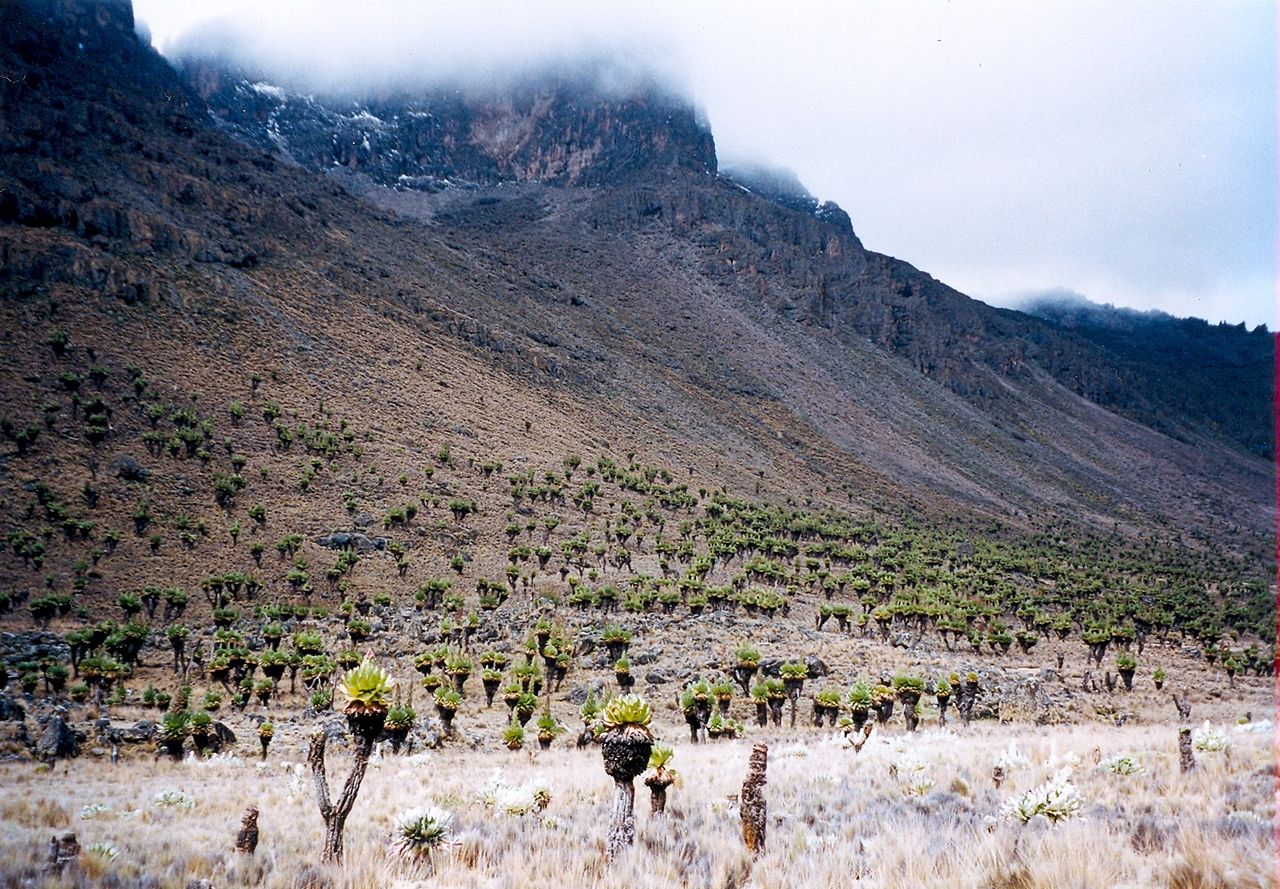 At 5,199m, Mount Kenya is the second highest peak in Africa. It is an ancient extinct volcano which, during its period of activity, would have reached 6,500 m. There are about a dozen glaciers remaining on the mountain, all of them rapidly retreating, and there are four secondary peaks located at the heads of U-shaped glacial valleys. Mount Kenya is one of the most impressive landscapes in East Africa.
At 5,199m, Mount Kenya is the second highest peak in Africa. It is an ancient extinct volcano which, during its period of activity, would have reached 6,500 m. There are about a dozen glaciers remaining on the mountain, all of them rapidly retreating, and there are four secondary peaks located at the heads of U-shaped glacial valleys. Mount Kenya is one of the most impressive landscapes in East Africa.
The site comprises deep valleys of low slopes and arid habitats rich in biodiversity, located in an ecological zone of transition between a mountainous ecosystem and semi-arid savanna grasslands. The place is also on the traditional migration route of African elephant populations.
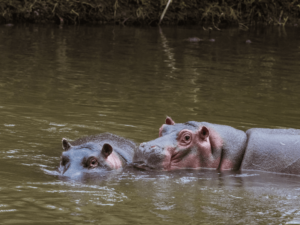
It is one of the lesser known parks in Kenya. Due to heavy rainfall, it is covered in lush marshes with tall grass, which makes it difficult to spot unlike other African parks. It is home to a wide range of wildlife like elephant, hippopotamus, lion, leopard, cheetah and some rare antelopes.
 The Tsavo East National Park is one of the oldest and largest parks in Kenya (13,747 km2). Tsavo National Park consists of two parts administratively (East and West), divided by the railway line connecting Mombasa to Nairobi. The western part is a hilly region while the eastern part is more desert and quite flat except for the Yatta plateau. These two regions offer contrasting landscapes, several biotopes which favor a diversified fauna.
The Tsavo East National Park is one of the oldest and largest parks in Kenya (13,747 km2). Tsavo National Park consists of two parts administratively (East and West), divided by the railway line connecting Mombasa to Nairobi. The western part is a hilly region while the eastern part is more desert and quite flat except for the Yatta plateau. These two regions offer contrasting landscapes, several biotopes which favor a diversified fauna.
There are large herds of buffaloes, lots of elephants, zebras, and impalas. The Maasai giraffe is also present here, as well as hippos, waterbucks, dik-diks, Coke's hartebeest, kudus and Cape elk. A few wildebeest are visible south of the park towards the Finch-Hatton. As for carnivores, lions, cheetahs, leopards (especially in n'Gulia), hyenas and crocodiles are present but more difficult to see.
There are also some endangered species such as the black rhinoceros at the "N'gulia rhino sanctuary", some Grévy's zebras and wild dogs. Several animals from the arid north are present, such as brush oryx, génuks (Waller's gazelle), Somali ostriches and vulturine guinea fowls.

 Away only 7 km from the center of Nairobi, it is a national park of Kenya. This park is threatened by the urban sprawl of Nairobi. It is closed on 3 sides. The southern part of the park is deliberately left “open” to allow the migration of animals such as zebras and wildebeests. With Lake Nakuru National Park, this park allows you to observe the black rhino in optimal conditions. At the eastern end of the park, a path leads to a bend in the Athi River to observe hippos, birds, turtles and monitor lizards.
Away only 7 km from the center of Nairobi, it is a national park of Kenya. This park is threatened by the urban sprawl of Nairobi. It is closed on 3 sides. The southern part of the park is deliberately left “open” to allow the migration of animals such as zebras and wildebeests. With Lake Nakuru National Park, this park allows you to observe the black rhino in optimal conditions. At the eastern end of the park, a path leads to a bend in the Athi River to observe hippos, birds, turtles and monitor lizards.
 It is located east of Gembe and the Gwasi Hills in the Lambwe Valley near the southern shore of the Gulf of Winam (Lake Victoria). Many of the animals visible here cannot be found elsewhere in Kenya: 400 species of birds have been recorded, but this is the only protected area in the country where the endangered species of blue swallow. Ostriches, on the other hand, are numerous.
It is located east of Gembe and the Gwasi Hills in the Lambwe Valley near the southern shore of the Gulf of Winam (Lake Victoria). Many of the animals visible here cannot be found elsewhere in Kenya: 400 species of birds have been recorded, but this is the only protected area in the country where the endangered species of blue swallow. Ostriches, on the other hand, are numerous.
A series of mammals breed in the park: the horse antelope as it is the only place in Kenya where it can be observed in the wild, Rothschild's giraffes. The park is also rich in orebis, reedbucks, impalas, topis, baboons, vervet monkeys and, with a bit of luck, leopard, cheetah and ratel can be observed.

Kora Park was in the past a reputedly insecure area, but today the political will in place is to protect it. This is why the park is looking for funds to develop and ensure long-term security. A multi-disciplinary development program is implemented simultaneously in Kora and Meru parks. It includes in particular the reconstruction of Kampi ya Simba (George Adamson's side) so that it can serve as a memorial and tourist attraction. The opening of road networks to facilitate access to the park is also an important point of this development program.

Shimba Hills National Reserve is a small national reserve in the Coast Province of Kenya. The reserve is an area of coastal rainforest and grassland. The reserve has over 300 elephants, roan antelope, black antelope, musk antelope, red duiker, black and white colobus, servals, buffaloes, giraffes, leopards, cheetahs, waterbucks and lions . 111 species of birds have been listed there, including the fasciated eagle, the Pucheran guinea fowl, the Uluguru sunbird, as well as indicator birds. Pythons, cobras, lizards and geckos are the main representatives of the reptilian fauna.

With a hot and dry climate, the park is known for its variety of wildlife and for its landscapes. The two volcanoes Olkaria and Hobley's (now extinct) are part of it, as are some obsidian formations from the cooled molten rock. Ashes from the eruption of Mount Longonot in the early 20th century can still be found around Hell's Gate National Park.
Also inside the park is "Hell's Gate Gorge", lined with red cliffs, which contains two volcanic mouths: "Fischer's Tower" and "Central Tower". There is a smaller gorge, which starts from the Central Tower to the south, and along which a path descends to hot springs.
The Olkaria geothermal station, the first in Africa of its kind, was established in 1981 and generates electricity from the park's hot springs and geysers.
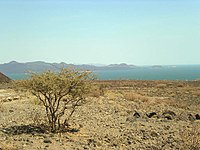
The Sibiloi National Park has the particularity of being a protected area with the aim of preserving both a fossiliferous zone of great richness and importance for paleontology and a natural habitat for various animal and plant species. More abundant in the past, several species that made up the fauna of this territory have disappeared or are now practically absent, giving way to Grévy's zebras, génuks, oryx lions and reticulated giraffes. More than 350 species of aquatic and terrestrial birds have been recorded there.
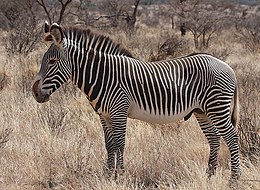 The reserve, with an area of 131 km, is located on a plateau whose altitude is between 850 and 1,230 meters. It consists of a rolling plain of ancient lava flows and whose volcanic soils are dotted with basalt and olivine. Among the animal species, we meet Grant's zebra and Grévy's zebra. Other mammal species include the reticulated giraffe, African savannah elephant, oryx, gerenuk, African buffalo, African lion, African leopard, cheetah, and spotted hyena. More than 365 species of birds have been identified in the reserve. The river is home to hippos and crocodiles. Somali ostriches are also widespread within the national reserve.
The reserve, with an area of 131 km, is located on a plateau whose altitude is between 850 and 1,230 meters. It consists of a rolling plain of ancient lava flows and whose volcanic soils are dotted with basalt and olivine. Among the animal species, we meet Grant's zebra and Grévy's zebra. Other mammal species include the reticulated giraffe, African savannah elephant, oryx, gerenuk, African buffalo, African lion, African leopard, cheetah, and spotted hyena. More than 365 species of birds have been identified in the reserve. The river is home to hippos and crocodiles. Somali ostriches are also widespread within the national reserve.

Shaba National Reserve offers spectacular landscapes, including forests bordering rivers, sparse forests and dry grasslands dominated by the Shaba Hill volcano. The abundant wildlife is concentrated around the waterholes and marshes scattered throughout the reserve. Shaba Reserve is home to the endangered Grévy's zebra and Williams' lark. The place would have served as a setting for the filming of scenes for several films.

It is the best known and most visited park in Kenya. It is also a reserve, and not a park, because the territory is still inhabited by the Maasai who graze their herds there. The reserve is essentially made up of vast plains of rolling savannah bounded to the west by the Oloololo escarpment and to the south by the Sand River. The confluence of this river, the Talek and the Mara creates areas of shallow marshes that bring a great diversity of biotopes in a very characteristic place of East Africa dreamed for safaris. Several scenes from the film Out of Africa were filmed there.
The reserve is a superb place to watch the migration of wildebeest, zebra, Thomson's gazelle and other animals twice a year, especially as they cross the Mara River. These herbivores, stopped by the presence of water (and the predators waiting for them there), gather in herds that can exceed 10,000 heads before throwing themselves into the water. The concentration of animals, the intense activity of predators (mainly lions, crocodiles, leopards and hyenas) and the spectacular nature of certain crossings (called crossings) create a bewildering spectacle even if the violence of the struggle for life is very present.
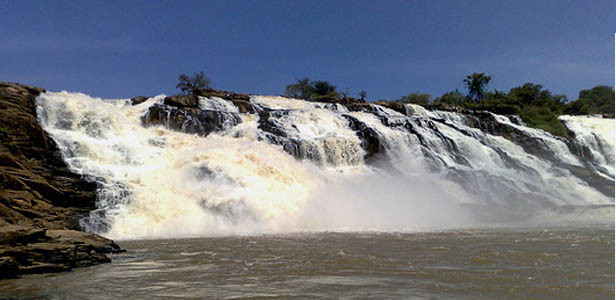
It is one of the highest and most forested parks in Kenya, rising to 4,000 meters above sea level. Its landscapes are verdant, made up of forests and moors with many waterfalls and rich vegetation. The Aberdares are indeed one of the rainiest regions of Kenya. The thickness of the tropical forests makes it difficult to observe the animals, on the other hand many geographical curiosities are interesting:
Central Island, also known as Crocodile Island, is a volcanic island located in the middle of Lake Turkana in Kenya. It is also the location of Central Island National Park, which is governed by the Kenya Wildlife Service.
It is made up of more than a dozen craters and cones, three of which are filled with small lakes. The two largest lakes partially fill craters up to a kilometer wide and about 80 m deep, the bottoms of which are close to sea level. 190 m above the surface of the lake. A chain of small E-W trending explosion craters cuts the east side of the 3 km wide island. Several small islands to the SE represent partially submerged crater rims, and other lava cones and plugs lie below the lake surface near the island.
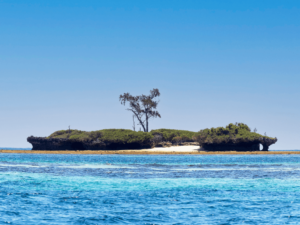
Located a few dozen kilometers from Mombasa off the south coast, not far from Zanzibar, the Kisite Marine National Park consists of four stunning islands surrounded by coral reefs. Here you are in the heart of one of the most beautiful landscapes in the country, an absolutely magical place where you can not only go scuba diving, but also go boating and swim with dolphins. The beaches of the region, bordered by the turquoise waters of the lagoon, offer real postcard landscapes.
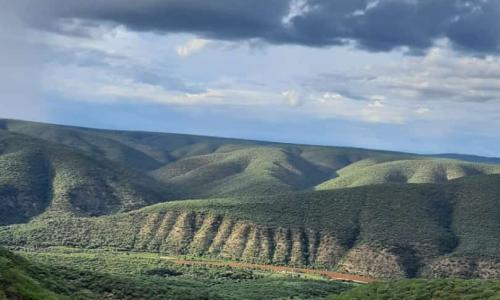
Malka Mari National Park is located along the border between Kenya and Ethiopia, It was established in 1989 to protect a high concentration of wildlife in an area covering a total of 1,500 square kilometers. Malka Mari National Park is a vast park with the most beautiful scenery, from anthill to dancing gazelles, where larger species can be spotted, such as Somali giraffes, spotted hyenas, dik-dik, cheetahs, Nile crocodiles walking on the sands of the Dawa River.
The Lewa Wildlife Conservancy (also known as Lewa Downs) is located in northern Kenya. It was formed in 1995 (28 years ago) and is a wildlife sanctuary incorporating the Ngare Ndare forest covering over 250 km2. The Conservancy is home to a wide variety of wildlife, including rare and endangered black rhinos, Grévy's zebras and sitatungas. It also includes the big five (lion, leopards, elephants, rhinos and Cape buffaloes). Lewa holds over 12% of the black rhino population in eastern Kenya and the largest population of Grévy's zebras in the world (about 350 individuals).
The Conservancy is also home to the Northern Rangelands Trust, an initiative of Ian Craig and Kenyan politician Francis ole Kaparo. That trust has had its fair share of controversy after US advocacy group The Oakland Institute found serious accusations in its report, including banning indigenous pastoralists from grazing on their ancestral lands. Lewa has its own education program which helps to develop schools and students. Lewa Wildlife Conservancy is located in Meru County, south of Isiolo town but north of Mount Kenya.

With altitudes varying from 600 m to 5200 m, Kenya is an ideal destination for walking. You move very quickly from one ecosystem to another. In a few days of trekking you can go from the desert to the primary forest to end up on a glacier. Very disorienting! And on foot you will have a completely different image of this magnificent country.
When it comes to trekking, Kenya is royal, whether for meeting people or admiring the scenery. However, avoid the rainy season for trekking and hiking. Except for the lighting ambience (if you're a photographer), when you'll get the best light. April, May and November are normally the rainy months.
Just after the rainy season, when the skies are still clear and the wildlife are at their best, and the gardens are green. Especially avoid April, May and November.

It is the cheapest means of transport, the large buses present in droves are called "coaches". They stop very often at each village to disembark, embark travelers. Despite their age, they are practical and very frequent.
Kenyan operators have also launched luxury coach lines to connect the largest cities at prices that remain advantageous.
This minibus connects two cities like coaches. In theory, the number of passengers authorized in a matatu is limited to 14, but it is often closer to twenty. Safety is not its strong point: the seats of these minibuses are not equipped with seat belts.
You will see that traveling in a matatu is a delicate and challenging experience, however, experiencing the native experience is worth it.

Retrouvez des informations complémentaires actualisées sur le Tourisme au Kenya in our Blog Tourismer.io
SOLIDARITÉS INTERNATIONAL teams have responded to the urgency of successive drought episodes, in particular by distributing drinking water, as well as by building and rehabilitating hydraulic structures. At the same time, they worked to improve the adaptive capacities of pastoral communities and their resilience to climate shocks in the north of the country.
In Nairobi, the capital, the largest slum in Africa, the Kibera slum, is affected in its own way by drought, with soaring food prices. From 2008, SOLIDARITÉS INTERNATIONAL introduced the vegetable bag, which allows tens of thousands of families to eat their fill in a small space and with very little water.